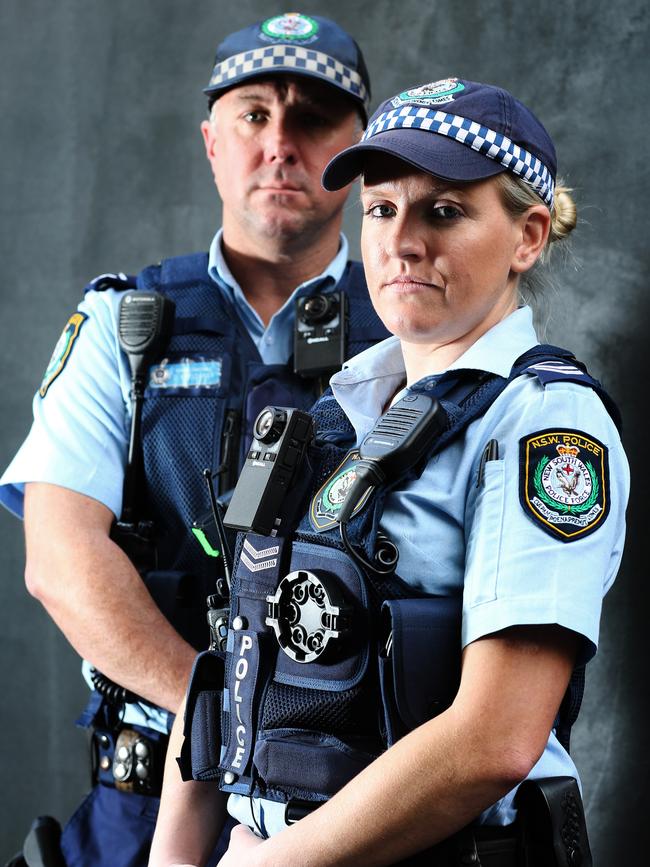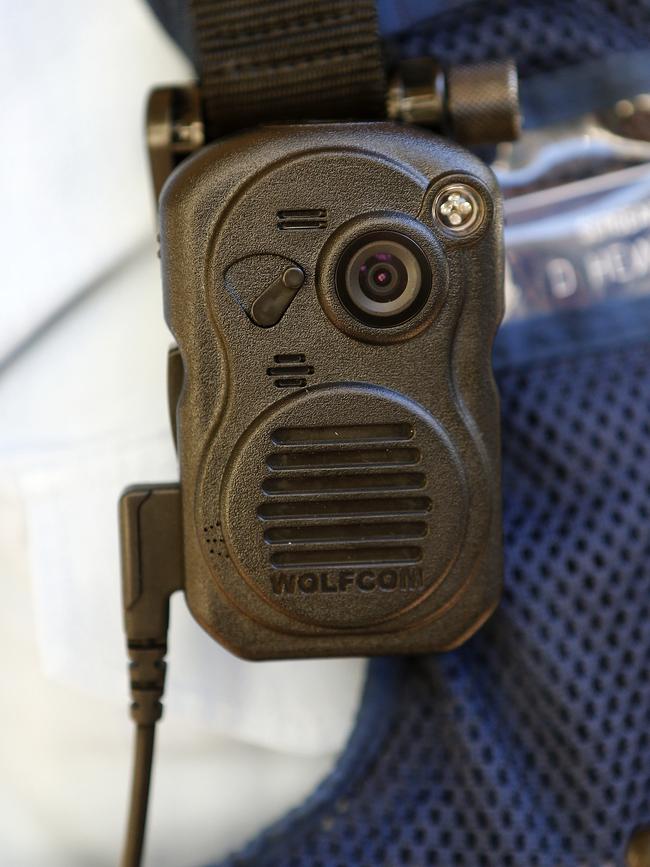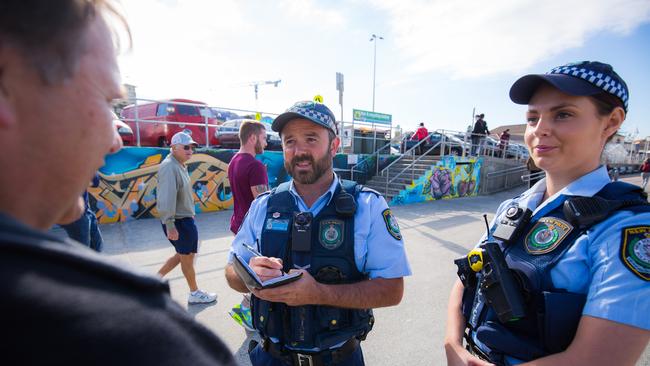NSW Police body cam: Assaults on officers, excessive force complaints against cops drop since rollout
The number of excessive force complaints against frontline NSW Police officers has dropped following the rollout of bodycams. DO YOU FEEL SAFER? VOTE IN OUR POLL.
Local
Don't miss out on the headlines from Local. Followed categories will be added to My News.
The number of highly aggressive assaults on Police — as well as complaints of excessive force used by our frontline cops — have decreased following the widespread rollout of more than 4800 body cameras.
A Parliamentary Review ordered to assess the effectiveness of body-worn cameras on frontline officers suggested there has also been an increase in the number of convictions of people assaulting police.


“Evaluations of police body-worn video in NSW conducted by Charles Sturt University have noted several encouraging indicative trends,” the report said.
This included: “Positive impacts on judicial processes due to the stronger evidentiary basis provided by police body-worn video; a de-escalation of the levels of aggression and assault by members of the public; and a reduction in the number of sustained complaints against members of the NSW Police Force.”
Stringent framework has been installed to regulate how and when body-worn cameras are used by NSW Police officers, including requirements that the officer must be “acting in the execution of his or her duty” and used overtly.
However, NSW Police can also use the footage for coronial and court proceedings, administrative decisions, conduct complaints against an officer and footage is used by the media.
However, surveyed legal practitioners continue to advocate for greater transparency around the use of body-worn video and access to footage.
The Law Society and Legal Aid calling for continuous recording when interacting with the public.
The legal representatives argued continuous recording would result in the possible reduction of excessive use of force, increased transparency and community confidence and a “possible reduction in racial profiling”.
Concerns were also raised around the routine denial of requests to access body-cam footage by the public.
Despite calls by the public for a series of reforms, the review recommended no changes to legislation around body-worn camera use.
“The review concludes that the act does not require amendment, and that there are robust procedures in place guiding police officers — and the public — on how and when devices are expected to be used and the retention and destruction policies in place,” the parliamentary officer said. “Evaluations conducted by CSU also indicate that police body-worn video is meeting its intended purpose as an investigative and evidentiary tool that is beneficial to police and the community.
“Increased transparency around the use of police body-worn video through the public release of the body-worn video should strengthen the effectiveness of police body-worn video and community trust in police.”

Police and Emergency Service Minister David Elliott said stage two of the bodycam rollout was currently underway.
“Local and specialist police will wear the cameras on their uniform, allowing them to record incidents or events where visual and audio evidence will support an investigation,” Mr Elliott said. “Offenders, bystanders and police officers are all more likely to behave in an appropriate manner if they are aware that everything is being recorded and knowing that a camera is on can help de-escalate a volatile situation and reduce potential violence.
“The NSW Government will continue to support police and help give frontline officers the cutting edge technology they need to protect the community.”
NSW Police declined to provide data on the number of excessive force claims against officers.

